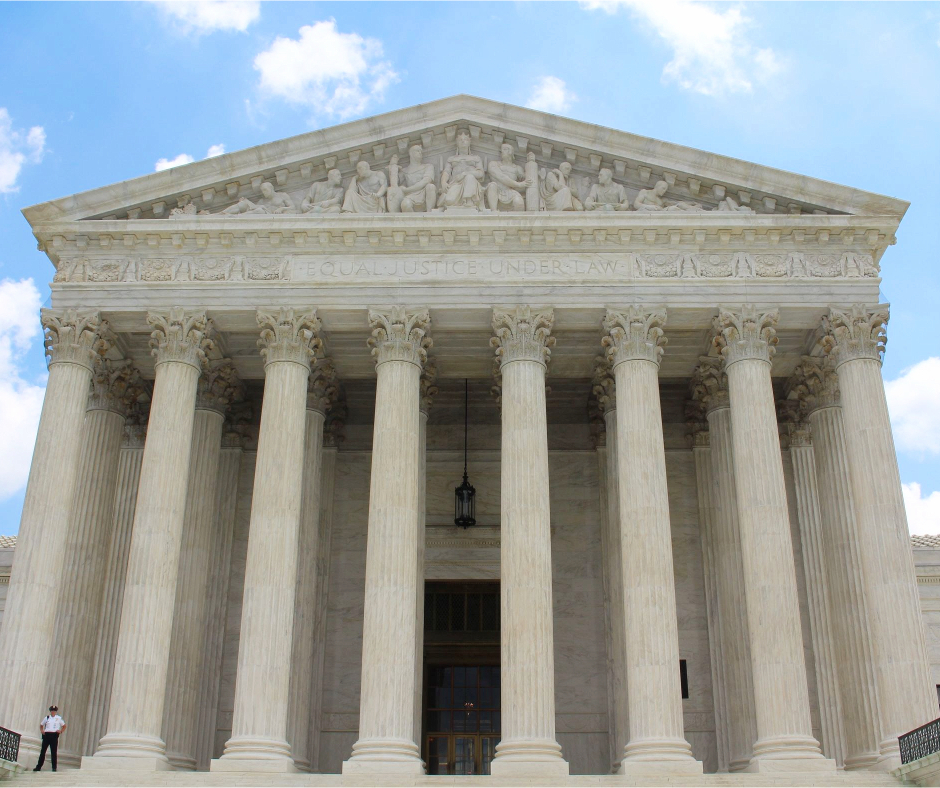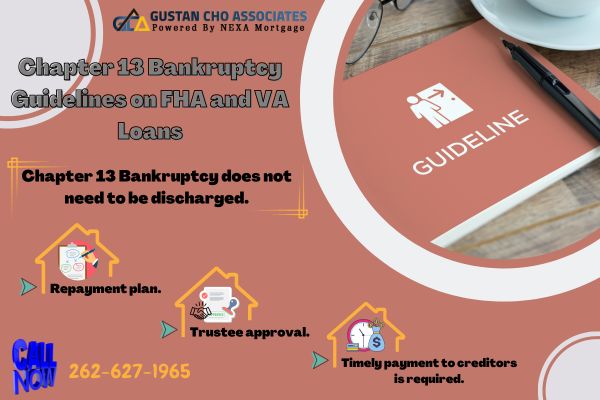In this blog, we will cover Chapter 13 Bankruptcy Guidelines. Borrowers can qualify for a mortgage during and after the Chapter 13 Bankruptcy repayment plan. You do not have to wait until the Chapter 13 Bankruptcy has been discharged.
Homebuyers who have filed Chapter 13 Bankruptcy are eligible for FHA and VA loans for one year after they have been making payments to the bankruptcy trustee. Payments need to be timely and the Chapter 13 Bankruptcy does not have to be discharged.
FHA and VA loans are the only traditional mortgage program that allows a mortgage during and after the Chapter 13 Bankruptcy repayment plan. FHA and VA Chapter 13 Bankruptcy Guidelines are almost identical. With rising home prices, you no longer have to wait until your Chapter 13 Bankruptcy has been discharged. Borrowers are eligible for FHA or VA loans after filing Chapter 13 Bankruptcy after making 12 timely payments. The following sections will cover the Chapter 13 Bankruptcy Guidelines during and after bankruptcy.
Chapter 7 versus Chapter 13 Bankruptcy
The common consumer types of bankruptcies are Chapter 7 and Chapter 13 Bankruptcy. Chapter 7 Bankruptcy is commonly referred to as total liquidation bankruptcy. What this means is all assets, with exempt assets, of the petitioner are liquidated to pay creditors. Chapter 7 Bankruptcy benefits consumers with little to no assets and no source of stable income.
Homebuyers can get a mortgage in a Chapter 13 Bankruptcy repayment plan with trustee approval. Borrowers can qualify for an FHA loan or VA loan one year after filing Chapter 13 Bankruptcy. Chapter 13 Bankruptcy does not need to be discharged. Timely payment to creditors is required. Needs to be manual underwriting.
Chapter 13 Bankruptcy is a court-monitored debt restructuring plan. You need a stable source of income to qualify for Chapter 13 Bankruptcy. Chapter 13 Bankruptcy is normally a three to five-year term. The U.S. Bankruptcy Court appoints a bankruptcy trustee for the petitioner.
Chapter 13 Bankruptcy Guidelines on Government and Conventional Loans
Chapter 13 Bankruptcy Guidelines on government-backed and conventional loans differ depending on the individual loan program. HUD and the VA allow borrowers during Chapter 13 Bankruptcy to qualify for FHA and VA loans one year into the Chapter 13 Bankruptcy repayment plan.
Gustan Cho Associates has traditional and non-QM mortgage loan programs during and after Chapter 13 Bankruptcy. Homebuyers can qualify for an FHA loan one year after Filing Chapter 13 Bankruptcy with Trustee Approval.
There are no waiting period requirements after the Chapter 13 Bankruptcy discharge date on FHA and VA loans. If the Chapter 13 Bankruptcy has not been discharged for two years, the file needs to be a manual underwrite on FHA and VA loans. There is a two-year waiting period after Chapter 13 Bankruptcy discharge on conventional loans. There is a four-year waiting period after the Chapter 13 Bankruptcy dismissal date on conventional loans. Non-QM loans do not have any waiting period requirements during and after Chapter 13 Bankruptcy.
Mortgage Guidelines During and After Chapter 13 Bankruptcy
Government and conventional loans have their own individual Chapter 13 Bankruptcy Guidelines. Each loan program has its own Chapter 13 Bankruptcy Guidelines. This section will cover qualifying for a mortgage during the Chapter 13 Bankruptcy repayment plan.
The Veterans Affairs and the U.S. Department of Housing and Urban Development are the two federal agencies that allow borrowers to qualify for home loans during the Chapter 13 Bankruptcy repayment plan under manual underwriting guidelines on FHA and VA loans.
FHA and VA loans have similar mortgage guidelines during the Chapter 13 bankruptcy repayment plan. The only difference between FHA and VA, manual underwriting guidelines, is timely payments in the past 12 to 24 months. HUD manual underwriting guidelines require timely payments in the past 24 months. VA guidelines on manual underwriting require timely payments in the past 12 months.
Manual Underwriting Guidelines on Debt-To-Income Ratio on FHA and VA Loans
The only major difference between manual versus automated underwriting systems for FHA loans and VA loans is the cap on debt-to-income ratio on manual underwrites. The maximum front-end debt-to-income ratio is 46.9%, and the back-end is 56.9% on automated underwriting system-approved files. There is no maximum front-end and back-end debt-to-income ratio on VA loans. Manual underwriting on debt-to-income ratio on FHA and VA loans are the following.
- 31% front-end and 43% back-end debt-to-income ratio with no compensating factors
- 37 front-end and 47% back-end debt-to-income ratio with one compensating factors
- 40% front-end and 50% back-end debt-to-income ratio with two compensating factors
The Trustee will structure a debt repayment plan. Part of the petitioner’s wages is allocated to pay creditors. Creditors get paid a reduced amount every month until the end of the repayment plan. Once the Chapter 13 Bankruptcy term is completed, the remaining debts are discharged, and the petitioner is debt free. Borrowers can qualify for a mortgage during and after Chapter 13 Bankruptcy.
Compensating Factors Versus Debt-To-Income Ratio Mortgage Guidelines
The above manual underwriting compensating factor versus debt-to-income ratio guidelines is recommended for underwriters. Mortgage underwriters can go higher or lower than the recommended manual underwriting guidelines. Underwriters have a lot of underwriters discretion on manual underwrites.
Many mortgage underwriters approve FHA and VA loans with higher debt-to-income ratios if the underwriter sees strong compensating factors. A larger down payment, strong reserves, verification of rent with low payment shock, history of savings, history of increasing income, a history of part-time, overtime, bonus income, and other income are all strong compensating factors.












